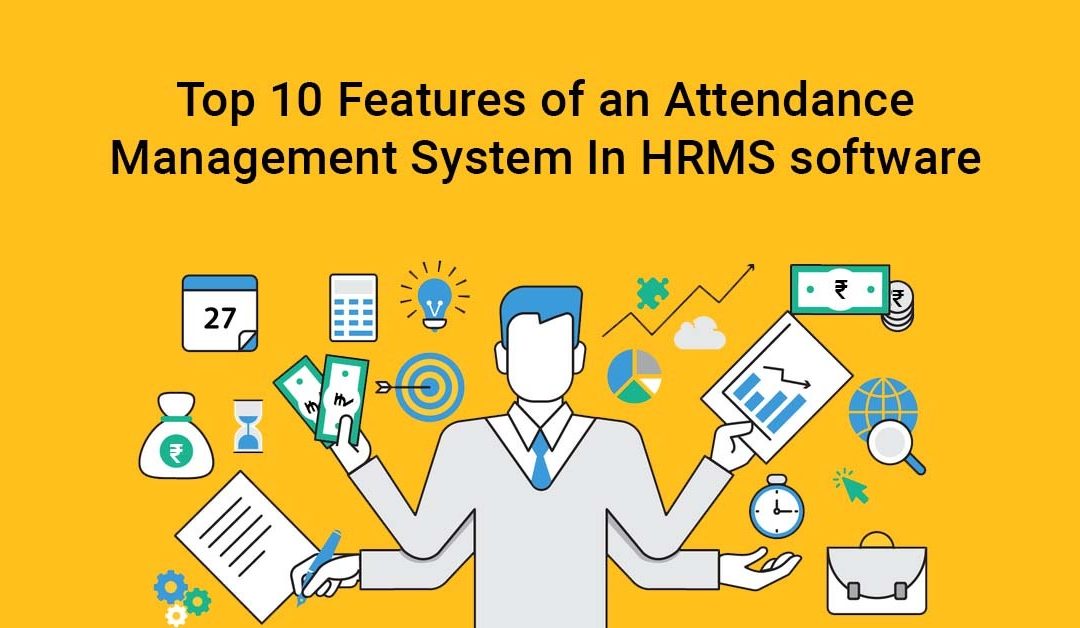The phrase “Attendance Management System” must be known to you. It has become increasingly important for your company’s reputation and revenues in recent years. However, if you are unfamiliar with the phrase, here is a quick explanation.
What is an Attendance Management System, and how does it work?
The skill of controlling employees’ attendance daily is known as an Attendance Management System in HRMS Software. Simply put, attendance entails turning up for work. The ATS keeps track of it.
It is the act of avoiding employee time theft by keeping track of their working hours, login time, breaks, and vacation time, among other things.
Organizations utilize a variety of techniques to collect correct attendance, including punch cards, spreadsheets, and biometric devices.
The advantages of a cloud-based attendance management system in HRMS Software, include flexibility, cost savings, and the ability to access it from a variety of platforms. And the tools they include are in high demand by today’s tech-savvy businesses.
The Advantages of Using an Attendance Management System in HRMS Software
1. Authentic Reliability
2. Productivity Improvements
3. Cost-cutting
4. Legal Obligation
An Attendance Management System’s Features
1. Check-in and check-out
Clocking in and out is an important component of an attendance management system in HRMS Software. Your e mployee should be able to clock in, punch in for breaks, and clock out at the end of the day.
2. Leave Administration
Your HRMS Software attendance management system should also cover this ground. A missing day should not be marked as “absent” automatically. Instead, employees should be able to take a half-day off and punch in as needed or request leave.
3. Integration with Payroll
If your organization uses an ATS with Payroll Integration, pay is computed based on the time the system records, reconciling any leaves or half-days, and making Payroll Management easier in HRMS Software. Not only will a diverse ATS compute your daily payroll, but it will also enable hourly compensation and flexible payouts.
4. Communication that is automated
Without any user involvement, any attendance management software should be able to connect with access control devices and clock attendance regularly. Even if the devices are in separate geographical locations, your system should still be able to interact with them.
5. Notifications
Every business should have a system in place that provides them with crucial event updates and notifications. Important modifications can be sent to users through email (auto alert) in the cloud-based attendance management system.
For example, if an employee clock in later than the designated hour, the system sends a message to the immediate supervisor. Managers/employees will get automated notifications regarding these abnormalities, asking for quick action.
6. Employee Self-Service.
Self-service is the feature you should seek if you want your attendance management system in HRMS Software to stand out. It’s a game-changer in every way. Employees no longer need to punch in at the workplace; instead, they may use an app or a web-based attendance tracking system to register their attendance or log in.
Without the participation of HR managers, leave requests, adjustments to attendance records, and any other type of self-compliance may be completed.
7. Integration with the Calendar
Digital calendars such as Google Calendar, Outlook, and others may be synchronized with an appropriate attendance management system. This will let everyone on your team know whether or not you are available. They’re particularly handy for remote teams, as they allow you to monitor a person’s attendance by just looking at the shared calendar.
8. Biometric Attendance.
If your company has a large staff and a set clock-in and clock-out time, biometric integration with a biometric machine is a must-have feature, and the biometric attendance function is the ideal choice for you. By putting the fingerprint of a specific employee on the device for attendance permission, it reduces the danger of fraud.
9. Advanced Analytics
A smart attendance management system uses advanced analytics to provide detailed visibility into your employees’ attendance habits, providing you a clear picture of who is working additional hours or overtime. With precise attendance statistics, you can discern between productive and nonproductive staff.
10. Requests from employees
Employees sometimes make special attendance requests to rectify their attendance in instances when they neglect to punch in or log out on time, or if they are field workers. The attendance is automatically updated in the system after the manager has authorized it.
Conclusion
Digital workforce management tools have the potential to revolutionize the way you manage your staff. These platforms offer a variety of tasks that are critical to employees’ day-to-day operations. Errors that might lead to compliance issues and month-end difficulties can be avoided with digital systems.



